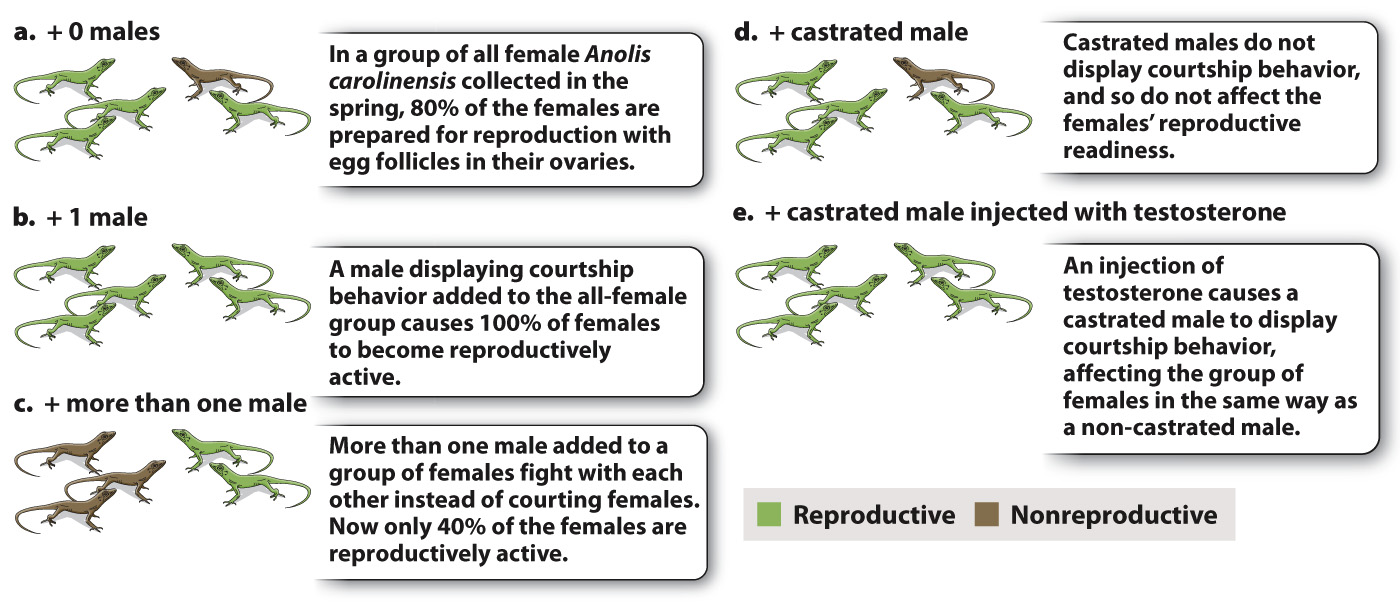Hormones can trigger certain behaviors.
The effect of a neuron is typically short lived and local: A neuron may, for example, connect to another neuron or cause a muscle to contract (Chapter 35). One way in which a stimulus may provoke a more widespread and prolonged effect is through the production of hormones. Hormones can affect multiple cells in target organs simultaneously (Chapter 38).
Anolis lizards demonstrate the important role of hormones in sexual behavior, showing both how social stimuli can affect the release of hormones and how hormones can affect behavior (Fig. 45.5). If females of Anolis carolinensis are isolated from males during the breeding season, about 80% of individuals have active egg follicles in their ovaries (Fig. 45.5a). If one male is added to a group of females, that figure increases to 100% (Fig. 45.5b). The courting behavior of the male lizard stimulates the females to produce hormones that cause the full development of the ovaries, making the females reproductively active. If a group of males instead of a single male is added to an all-

986
These simple laboratory experiments demonstrate the complex interplay between hormones and behavior. Testosterone mediates both male–